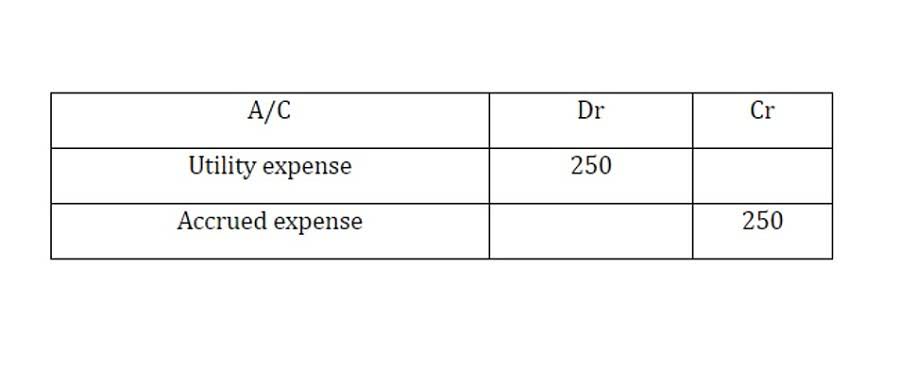Profit, loss and other comprehensive income

Companies may use a single statement for both net and comprehensive income. Or they might use two statements, starting with net income then showing other incomes for a total comprehensive income. Adjusting for things like security prices and foreign exchange rates seems complex.
Intermediate Financial Accounting 1

Financial statements, including those showing comprehensive income, only portray activity from a certain period or specific time. Since ROE is calculated by dividing net income by shareholder’s equity, significant OCI adjustments to equity retained earnings can distort this ratio, either inflating or understating a company’s profitability. Analysts must consider both net income and OCI when evaluating ROE for a more accurate understanding of a company’s performance. As you can see, the net income is carried down and adjusted for the events that haven’t occurred yet. This gives investors and creditors a good idea of what the company’s assets and net assets are truly worth. Keep in mind, that we are not only adjusting the assets of the company, available for sale securities, we are also adjusting the net assets of the company, stockholder’s equity.

Capitalized Costs: Key Components, Impact, and Industry Practices
A revaluation surplus on a financial asset classified as FVTOCI is a good example of a bridging gain. The asset is accounted for at fair value on the statement of financial position but effectively at cost in SOPL. As such, by recognising the revaluation surplus in OCI, the OCI is acting as a bridge between the statement of financial position and the SOPL. On disposal, reclassification ensures that the amount recognised in SOPL will be consistent with the amounts that would be recognised in SOPL if the financial asset had been measured at amortised cost. Other comprehensive income is not listed with net income, instead, it appears listed in its own section, separate from the regular income statement and often presented immediately below it. Keeping up with the International Financial Reporting Standards (IFRS) is a big hurdle.
What is the role of income statements in making investment decisions?
We examined the accounting standards governing OCI, noting the roles of IFRS and US GAAP in dictating how OCI is reported. The reporting of OCI, whether through a single-statement or two-statement approach, was discussed to understand how it integrates into the overall financial statements. The importance of OCI in financial analysis was highlighted, underscoring its role in providing a fuller understanding of a company’s financial health statement of comprehensive income and risk exposure. The income statement provides a view of a company’s main revenue and expenses. Starting from revenue and subtracting all expenses to get net income, it does not include any unrealized gains and losses.
Understanding Other Comprehensive Income in Financial Reporting
Other Comprehensive Income (OCI) includes items that impact a company’s equity but are excluded from net income. Recognized under both Generally Accepted Accounting Principles (GAAP) and International Financial Reporting Standards (IFRS), OCI provides a broader view of financial performance. A major component of OCI is unrealized gains and losses on available-for-sale securities—investments whose value fluctuates with market conditions. Under GAAP, these changes are recorded in OCI until the securities are sold, at which point the gains or losses are realized and transferred to net income. In this article, we’ll cover statement of other comprehensive income vs regular income statement. Other Comprehensive Income (OCI) represents certain gains and losses that have not been realized and are excluded from net income on the income statement.


By encompassing these additional elements, comprehensive income offers AI in Accounting a more complete picture of a company’s financial health, capturing potential risks and opportunities that net income might overlook. Comprehensive income reveals a company’s true financial performance by combining net income with unrealized gains and losses. This broader measure includes changes in investment values, cash flow hedges, and foreign currency translations. Understanding what comprehensive income is provides a more complete picture of a company’s current earnings and future potential. It offers valuable insight for investors and stakeholders seeking to assess a company’s overall financial health. Comprehensive income includes several elements that are not captured in the net income figure, providing a more nuanced view of a company’s financial performance.

#3 – Available for Sale Securities
The premier platform for European financial data, serving investors and companies with 2.9M+ filings from 8,980+ companies across 44 markets. They help in making choices that improve how the company runs and manages costs. Comprehensive income excludes owner-caused changes in equity, such as the sale of stock or purchase of Treasury shares. My Accounting Course is a world-class educational resource developed by experts to simplify accounting, finance, & investment analysis topics, so students and professionals can learn and propel their careers. It is worth noting that these issues are uncommon in small and medium-sized firms. Larger firms that experience such financial situations are more likely to have OCI items.
- Consolidated financial statements are required when a company has subsidiaries or other entities that need to be included in the financial reporting process.
- Potential candidates for inclusion are additional accounting for pensions and gains and losses on transactions in derivative instruments.
- In regards to taxes, it is permitted to report other comprehensive income after taxes, or one can report before taxes as long as a single income tax expense line item is included at the end of the statement.
- For a comprehensive view, always analyze the balance sheet and cash flow statement alongside the income statement.
- The Wellbourn Services Ltd. statement of income, shown earlier, is an example of a typical single-step income statement.
- It also includes cash flow hedges, which can change in value depending on the securities’ market value, and debt securities transferred from available for sale to held to maturity, which may also incur unrealized gains or losses.
IRS hotline questions resolved faster in 2025; concern grows about agency’s future
- Net income, often referred to as the bottom line, represents the total earnings of a company after deducting all expenses, taxes, and costs from its total revenue.
- A positive balance in this report will increase shareholders’ equity, while a negative balance will reduce it; the change appears in the accumulated other comprehensive income account.
- They check many things, like big transactions and if the company follows financial norms.
- Here’s a simple list of items included in the “Statement of Comprehensive Income.”
- It requires strict accounting procedures for a true picture of a company’s financial health.
This gives you a clearer view of a company’s financial momentum. When preparing the income statement (or statement of comprehensive income) it’s important to note that discontinued operations amounts should be reported net of tax. Other comprehensive income is an account that appears on the income statement. NOTE – in the Wellbourn example presented above, on the statement of comprehensive income, the account is listed as Unrealized gain from FVOCI investment.
